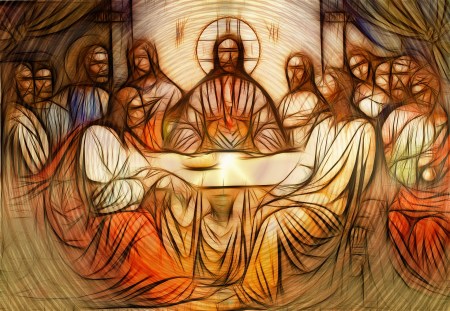
In this post we’ll cover the following interesting historical information about the New Testament:
- The canonization of the books of the New Testament.
- How the canon came to be.
- Authorship: knowing the authors/writers better.
- Audience: Jews and Gentiles occupied by Rome.
- Translation: How translation affects the original meaning of Scripture.
- Translation can have a huge impact on the meaning of Scripture.
- Cultural relevance: knowing the culture/society of the day better.
- Ethnic background: Jews and Gentiles.
- What is the significance?
THE CANONIZATION OF THE BOOKS OF THE NEW TESTAMENT: HOW IT CAME TO BE
The books of the New Testament were determined to be canon based upon certain criteria. One requirement was the author being a first eyewitness of Jesus. Paul’s writings were almost removed from the canon because he did not meet Jesus in person before His resurrection. Paul’s writings were kept because of his encounter with Jesus on the road to Damascus. Another factor was if the letters agreed with one another. Letters that contradicted the tenets and principles of the Christian faith as passed down by the apostles were dismissed.
Other factors the early church examined when determining the New Testament canon were the following:
- Apostolic Authority
- The work being inspired
- The work being universally received.
The following ancient sources confirm the early New Testament canon:
1. Clement of Rome (c. A.D. 95)
2. Ignatius of Antioch (c. A.D. 115)
3. Polycarp, a disciple of John, (c. A.D. 108)
By the Council of Hippo (393) and the Council of Carthage (397) the New Testament had been canonized as 27 books.
More info:
https://crossexamined.org/how-we-got-our-bible-new-testament-canonical-grid/
AUTHORSHIP AND AUDIENCE: KNOWING THE AUTHORS/WRITERS BETTER









TRANSLATION: HOW TRANSLATION AFFECTS THE ORIGINAL MEANING OF SCRIPTURE
The word of God is infallible. However, sometimes translations of the original text can alter the intended meaning and lead to theological misconceptions. I would encourage anyone doing Bible study to use an interlinear Bible. It shows the original Hebrew or Greek text.
Here are some examples in history of how translation can affect the meaning of the original Biblical text:
- The Protestant Reformer Martin Luther caught a translation error in the Latin Vulgate Bible.The Latin Vulgate Bible was the Latin translation of the Bible used by the church during Luther’s time. In Matthew 4:17, where it says, “Repent, for the kingdom of heaven is at hand” the word “repent” was translated to “do penance”. Penance requires that an individual perform an action in order to be forgiven. Luther exposed this incorrect translation and returned the church back to salvation by faith alone and not based upon works.
- Several female church leaders including the Apostle Junia (Romans 16:7), Nympha who ran a house church (Colossians 4:15), and Euodia (Philippians 4:2-3) who worked alongside Paul were believed to be male for much of church history. Translators of the original Greek text changed their names to their masculine forms – Junias, Nymphas, and Euodias. The pronouns in these verse translations were also changed to the masculine form. Some translations still have these inaccuracies.
- Likewise, masculine pronouns were added in Titus 1:5-9 for the qualifications for elders, 1 Timothy 3:1-7 for the qualifications for overseers, and 1 Timothy 3:8-12 for the qualifications for deacons. Where the translation says “man” the original text reads “anyone”. The addition of masculine pronouns in these passages by translators has shaped theology that disqualifies women from church leadership positions.
- In Ephesians 5:22, “ Wives, submit to your own husbands, as to the Lord. (NKJV)”. Some translations such as the NASB have “submit” italicized because they know the word does not exist in the original Greek text. The word “submit” was an addition by translators and was not a part of Paul’s original letter to the Ephesian church.
A translator has a lot of power. Theologians have deduced that both cultural and personal bias played a part in these mistranslations. Mistranslations have caused incorrect theologies to arise that have been damaging to the body of Christ throughout the centuries. The majority of Scripture is accurately translated. It is primarily the areas concerning repentance (Latin Bible) and women that have been altered. Scriptures pertaining to the atonement of Christ are accurate to the original and have not been altered.
Online interlinear BIble: https://biblehub.com/interlinear/
CULTURAL RELEVANCE: KNOWING THE CULTURE/SOCIETY OF THE DAY BETTER
Jews lived under Roman occupation. Rome was the greatest military power in the world during the time of Christ. This caused some Jews to become “hellenized” or secular Jews. It was a very tumultuous time in history with many uprisings and conflicts. The Roman Empire lasted anywhere from 500 – 1500 years depending upon how the timeline is calculated. There was a west and east Empire which skews the dates. Regardless, Roman as an Empire was at its pinnacle during the time of the New Testament and early church.
Rome was a very classist society with many social strata. Christianity was the great equalizer (Galatians 3:28) and this conflicted with historical Greek and Roman culture. Christianity was viewed by Roman leaders as a “religion of women and children” due to the high number of female converts and was mocked for being so. Christianity was not seen as a threat to Rome until it began to threaten the social order. However, Jewish culture viewed Christianity as almost an immediate threat.
Christianity offered women and slaves greater freedoms than what Roman or Jewish culture permitted. Christian husbands were known to be the only men who allowed their wives to leave their homes – usually at night to attend church meetings and to minister the Gospel under cover of darkness. In Roman culture, women did not leave the home. When attending parties Roman husbands hired escorts to function as their wife’s stand in. This was considered normal practice as was male homosexuality.
Female infanticide was commonly practiced in Roman culture. Christians did not practice female infanticide. This led to higher numbers of women among Christian populations than among the pagan population. As a result, Christian women were sometimes forced into marriages with unbelievers. If they refused they were put to death.
Because Romans worshiped many gods and Christians worshiped only one they were considered to be “atheists”. This was an accusation brought against believers by Rome and a cause of persecution. It was not until 313 AD that Emperor Constantine granted Christianity legal status via the Edict of Milan.
Roman life generally had a high standard of living. As a delicacy, Romans ate flamingos. City plumbing and public bath houses were the norm. However, this did not always spread to the nations that they conquered. Rome had a culture which valued both art and war. This was reflected in grotesque “performances” in the Roman coliseum where people would actually battle each other and die. When desired the coliseum could be filled with water to have real-life sea battles with ships and crocodiles in the water. As time progressed the displays became more horrific with men, women, and children being smeared with blood and fed to wild animals for entertainment.
Romans also loved sports. Phlegon, a second century Greek historian confirmed that Jesus died in the same year as the 202nd Olympic Greek games. Phlegon also states that Jesus rose from the dead.
One of the earliest depictions of Jesus was Roman graffiti from 200 AD mocking both Christ and a Christian named Alexamenos. The graffiti is an engraving of Alexamenos, who is depicted as a Roman soldier, praying to Jesus. Jesus is drawn hanging on the cross with the body of a man and the head of a donkey. It was common in Roman culture to depict leaders who were disliked as being donkeys or part donkey. There are no actual renderings of Jesus because Jewish culture disallowed portraits. They believed a portrait to be a graven image and a violation of the Law.
During Jesus’ time on earth, Rome was not the only superpower. There were many important global events taking place at this time. The Mayan civilization was flourishing at its pinnacle in what is known today as Central America and southern Mexico. Emperor Guang Wu restored the Han dynasty and reigned during the time of Christ’s death and resurrection.
Chinese history from this time period records interesting astronomical events which align with the death and resurrection of Jesus. Historical records dated around A.D 31 state:
“Eclipse on the day of Gui Hai, Man from Heaven died”. History of Latter Han, Annals, No. 18, Gui Hai.
Another historical record says: “The sun and moon were eclipsed. The sins of all the people are now on one man. Pardon is proclaimed to all under heaven.” History of Latter Han Dynasty, Volume 1, Chronicles of Emperor Guang Wu, 7th year.
As a result, Emperor Guang Wu “[…] avoided the Throne Room, suspended all military activities and did not handle official business for five days.” History of Latter Han Dynasty, Vol. 1, Chronicles of Emperor Guang Wu, 7th year”.
It is clear from ancient records that the death and resurrection of Jesus Christ reached much farther than what has been historically understood. The early apostles sacrificed their freedom and their lives for the Gospel of Jesus Christ in a culture where both Jew and Roman opposed them.
ETHNIC BACKGROUND: WHAT IS THE SIGNIFICANCE?






Leave a Reply